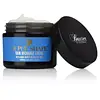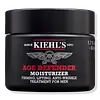What's inside
What's inside
 Key Ingredients
Key Ingredients

 Benefits
Benefits

 Concerns
Concerns

 Ingredients Side-by-side
Ingredients Side-by-side

Water
Skin ConditioningGlycerin
HumectantDimethicone
EmollientIsononyl Isononanoate
EmollientAlcohol Denat.
AntimicrobialPrunus Armeniaca Kernel Oil
MaskingPolysorbate 20
EmulsifyingPropanediol
SolventPEG-20 Methyl Glucose Sesquistearate
EmulsifyingAmmonium Polyacryloyldimethyl Taurate
Emulsion StabilisingPolyacrylamide
Phenoxyethanol
PreservativeCaprylyl Glycol
EmollientHydroxypropyl Tetrahydropyrantriol
Skin ConditioningC13-14 Isoparaffin
EmollientPropylene Glycol
HumectantCaffeine
Skin ConditioningVigna Aconitifolia Seed Extract
Skin ConditioningDisodium EDTA
Laureth-7
EmulsifyingBHT
AntioxidantMagnesium Gluconate
Skin ConditioningXanthan Gum
EmulsifyingSodium Cocoyl Glutamate
CleansingPentylene Glycol
Skin ConditioningHydrolyzed Soy Protein
HumectantT-Butyl Alcohol
PerfumingTocopherol
AntioxidantWater, Glycerin, Dimethicone, Isononyl Isononanoate, Alcohol Denat., Prunus Armeniaca Kernel Oil, Polysorbate 20, Propanediol, PEG-20 Methyl Glucose Sesquistearate, Ammonium Polyacryloyldimethyl Taurate, Polyacrylamide, Phenoxyethanol, Caprylyl Glycol, Hydroxypropyl Tetrahydropyrantriol, C13-14 Isoparaffin, Propylene Glycol, Caffeine, Vigna Aconitifolia Seed Extract, Disodium EDTA, Laureth-7, BHT, Magnesium Gluconate, Xanthan Gum, Sodium Cocoyl Glutamate, Pentylene Glycol, Hydrolyzed Soy Protein, T-Butyl Alcohol, Tocopherol
Water
Skin ConditioningGlycerin
HumectantDimethicone
EmollientAlcohol Denat.
AntimicrobialSucrose Stearate
EmollientOrbignya Oleifera Seed Oil
EmollientPentaerythrityl Tetraethylhexanoate
EmollientPoly C10-30 Alkyl Acrylate
Emulsion StabilisingTheobroma Cacao Seed Butter
EmollientHydrogenated Polyisobutene
EmollientOctyldodecanol
EmollientStearic Acid
CleansingPalmitic Acid
EmollientSynthetic Wax
AbrasiveSodium Polyacrylate
AbsorbentPhenoxyethanol
PreservativeCapryloyl Salicylic Acid
ExfoliatingParfum
MaskingPolyurethane-2
Acrylates/C10-30 Alkyl Acrylate Crosspolymer
Emulsion StabilisingPolymethyl Methacrylate
Chlorphenesin
AntimicrobialXanthan Gum
EmulsifyingSodium Hydroxide
BufferingLimonene
PerfumingHydrolyzed Linseed Extract
Skin ConditioningDimethiconol
EmollientTocopherol
AntioxidantCaffeine
Skin ConditioningPentaerythrityl Tetra-Di-T-Butyl Hydroxyhydrocinnamate
AntioxidantGlycine Soja Protein
EmulsifyingMyristic Acid
CleansingAscorbyl Glucoside
AntioxidantAdenosine
Skin ConditioningVaccinium Myrtillus Fruit Extract
Skin ConditioningSodium Benzoate
MaskingCaprylyl Glycol
EmollientDimethyl Mea
BufferingSaccharum Officinarum Extract
MoisturisingSodium Cocoyl Glutamate
CleansingLinalool
PerfumingEthylhexylglycerin
Skin ConditioningSodium Dehydroacetate
PreservativeCitrus Aurantium Dulcis Fruit Water
MaskingCitrus Limon Fruit Extract
MaskingPotassium Sorbate
PreservativeAcer Saccharum Extract
Skin ConditioningCitral
PerfumingWater, Glycerin, Dimethicone, Alcohol Denat., Sucrose Stearate, Orbignya Oleifera Seed Oil, Pentaerythrityl Tetraethylhexanoate, Poly C10-30 Alkyl Acrylate, Theobroma Cacao Seed Butter, Hydrogenated Polyisobutene, Octyldodecanol, Stearic Acid, Palmitic Acid, Synthetic Wax, Sodium Polyacrylate, Phenoxyethanol, Capryloyl Salicylic Acid, Parfum, Polyurethane-2, Acrylates/C10-30 Alkyl Acrylate Crosspolymer, Polymethyl Methacrylate, Chlorphenesin, Xanthan Gum, Sodium Hydroxide, Limonene, Hydrolyzed Linseed Extract, Dimethiconol, Tocopherol, Caffeine, Pentaerythrityl Tetra-Di-T-Butyl Hydroxyhydrocinnamate, Glycine Soja Protein, Myristic Acid, Ascorbyl Glucoside, Adenosine, Vaccinium Myrtillus Fruit Extract, Sodium Benzoate, Caprylyl Glycol, Dimethyl Mea, Saccharum Officinarum Extract, Sodium Cocoyl Glutamate, Linalool, Ethylhexylglycerin, Sodium Dehydroacetate, Citrus Aurantium Dulcis Fruit Water, Citrus Limon Fruit Extract, Potassium Sorbate, Acer Saccharum Extract, Citral
Ingredients Explained
These ingredients are found in both products.
Ingredients higher up in an ingredient list are typically present in a larger amount.
Alcohol Denat. is an alcohol with a denaturant property. It is created by mixing ethanol with other additives.
This ingredient gets a bad rep because it is irritating and drying - mostly due to its astringent property. Astringents draw out natural oils in tissue, constricting pores and leaving your skin dried out.
However, alcohol denat. is not all that bad.
Due to its low molecular weight, alcohol denat. tends to evaporate quickly. One study on pig skin found half of applied alcohol evaporated in 10 seconds and less than 3% stayed on skin.
This also helps other ingredients become better absorbed upon application.
Studies are conflicted about whether this ingredient causes skin dehydration. One study from 2005 found adding emollients to propanol-based sanitizer decreased skin dryness and irritation. Another study found irritation only occurs if your skin is already damaged.
Small amounts of alcohol are generally tolerated by oily skin or people who live in humid environments.
The rule of thumb is if this alcohol is near the end of an ingredients list, it will probably not affect your skin much.
Also...
This ingredient has antimicrobial and solvent properties.
The antimicrobial property helps preserve products and increase their shelf life. As a solvent, it helps dissolve other ingredients.
Other types of astringent alcohols include:
Learn more about Alcohol Denat.Caffeine is most associated with coffee, tea, and cacao. In skincare, it helps with calming inflammation and is rich in antioxidants.
While caffeine is used to treat cellulite and and dark circles, further studies are needed to prove this. It has been believed to help with these skin conditions due to its ability to dilate blood vessels and increase blood flow.
Some studies are looking into caffeine's ability to protect against UV rays.
Learn more about CaffeineCaprylyl Glycol is a humectant and emollient, meaning it attracts and preserves moisture.
It is a common ingredient in many products, especially those designed to hydrate skin. The primary benefits are retaining moisture, skin softening, and promoting a healthy skin barrier.
Though Caprylyl Glycol is an alcohol derived from fatty acids, it is not the kind that can dry out skin.
This ingredient is also used as a preservative to extend the life of products. It has slight antimicrobial properties.
Learn more about Caprylyl GlycolDimethicone is a type of synthetic silicone created from natural materials such as quartz.
What it does:
Dimethicone comes in different viscosities:
Depending on the viscosity, dimethicone has different properties.
Ingredients lists don't always show which type is used, so we recommend reaching out to the brand if you have questions about the viscosity.
This ingredient is unlikely to cause irritation because it does not get absorbed into skin. However, people with silicone allergies should be careful about using this ingredient.
Note: Dimethicone may contribute to pilling. This is because it is not oil or water soluble, so pilling may occur when layered with products. When mixed with heavy oils in a formula, the outcome is also quite greasy.
Learn more about DimethiconeGlycerin is already naturally found in your skin. It helps moisturize and protect your skin.
A study from 2016 found glycerin to be more effective as a humectant than AHAs and hyaluronic acid.
As a humectant, it helps the skin stay hydrated by pulling moisture to your skin. The low molecular weight of glycerin allows it to pull moisture into the deeper layers of your skin.
Hydrated skin improves your skin barrier; Your skin barrier helps protect against irritants and bacteria.
Glycerin has also been found to have antimicrobial and antiviral properties. Due to these properties, glycerin is often used in wound and burn treatments.
In cosmetics, glycerin is usually derived from plants such as soybean or palm. However, it can also be sourced from animals, such as tallow or animal fat.
This ingredient is organic, colorless, odorless, and non-toxic.
Glycerin is the name for this ingredient in American English. British English uses Glycerol/Glycerine.
Learn more about GlycerinPhenoxyethanol is a preservative that has germicide, antimicrobial, and aromatic properties. Studies show that phenoxyethanol can prevent microbial growth. By itself, it has a scent that is similar to that of a rose.
It's often used in formulations along with Caprylyl Glycol to preserve the shelf life of products.
Sodium Cocoyl Glutamate is a gentle cleanser and surfactant. It is the sodium salt of the Cocoyl Glutamic Acid and comes from coconut oil. As a surfactant, it helps lift dirt and oil to be washed away.
Sodium Cocoyl Glutamate also has an emolliating effect and can help leave the skin feeling soft.
Tocopherol (also known as Vitamin E) is a common antioxidant used to help protect the skin from free-radicals and strengthen the skin barrier. It's also fat soluble - this means our skin is great at absorbing it.
Vitamin E also helps keep your natural skin lipids healthy. Your lipid skin barrier naturally consists of lipids, ceramides, and fatty acids. Vitamin E offers extra protection for your skin’s lipid barrier, keeping your skin healthy and nourished.
Another benefit is a bit of UV protection. Vitamin E helps reduce the damage caused by UVB rays. (It should not replace your sunscreen). Combining it with Vitamin C can decrease sunburned cells and hyperpigmentation after UV exposure.
You might have noticed Vitamin E + C often paired together. This is because it is great at stabilizing Vitamin C. Using the two together helps increase the effectiveness of both ingredients.
There are often claims that Vitamin E can reduce/prevent scarring, but these claims haven't been confirmed by scientific research.
Learn more about TocopherolWater. It's the most common cosmetic ingredient of all. You'll usually see it at the top of ingredient lists, meaning that it makes up the largest part of the product.
So why is it so popular? Water most often acts as a solvent - this means that it helps dissolve other ingredients into the formulation.
You'll also recognize water as that liquid we all need to stay alive. If you see this, drink a glass of water. Stay hydrated!
Learn more about WaterXanthan gum is used as a stabilizer and thickener within cosmetic products. It helps give products a sticky, thick feeling - preventing them from being too runny.
On the technical side of things, xanthan gum is a polysaccharide - a combination consisting of multiple sugar molecules bonded together.
Xanthan gum is a pretty common and great ingredient. It is a natural, non-toxic, non-irritating ingredient that is also commonly used in food products.
Learn more about Xanthan Gum